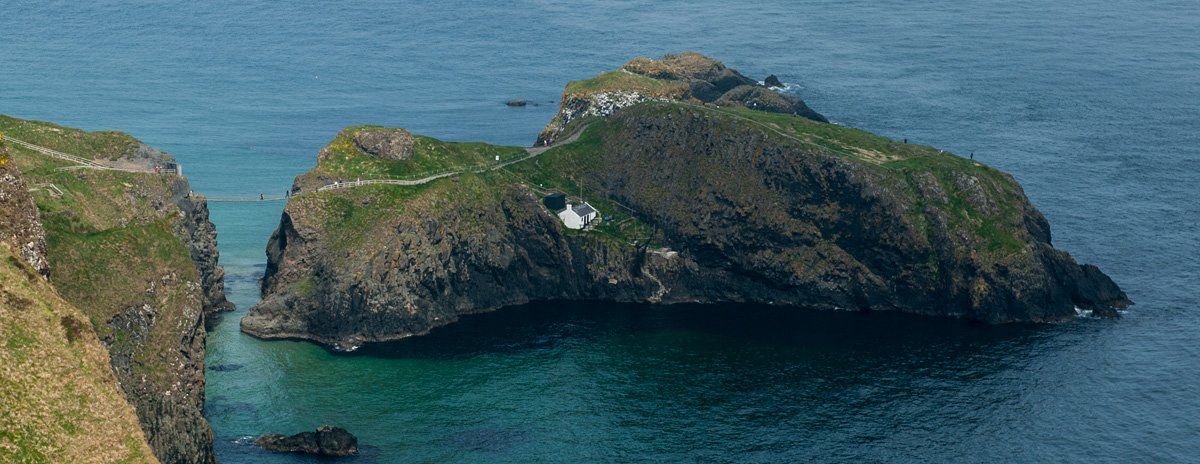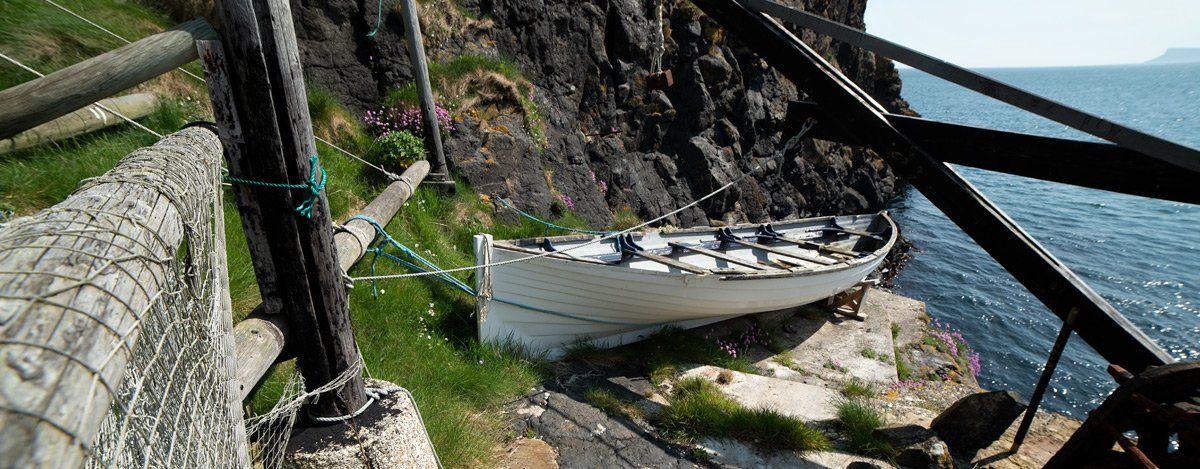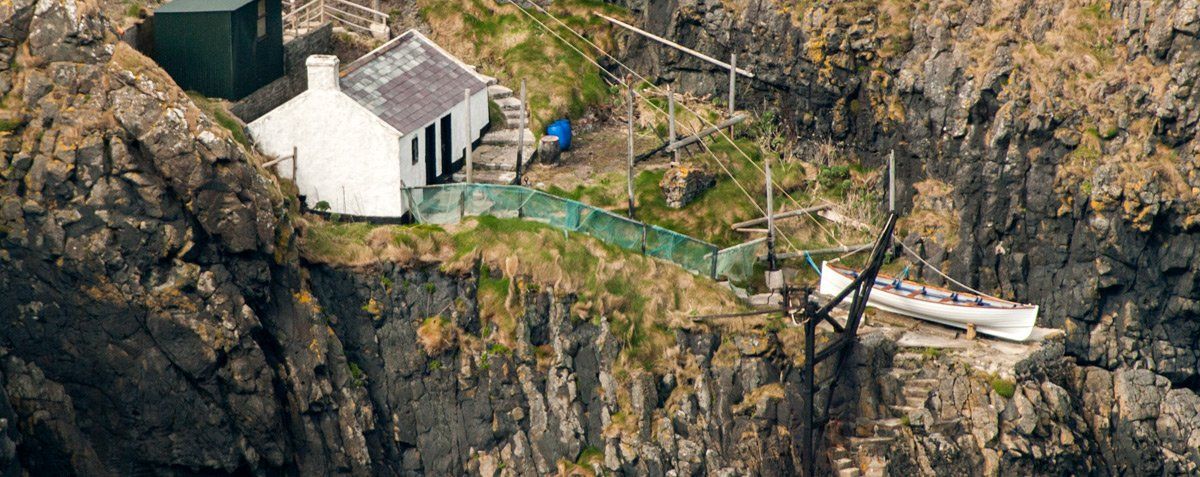Salmon fishing here at Carrick a Rede is recorded from the 1600s, the rope bridge itself was not installed until 1755, before this boats rowed around from Larry Bane and Ballintoy, at Larry Bane before the headland was quarried away fishermen would have used the caves for storage and keeping boats. The fishery here consisted of two main parts, the island where the fish were netted and the ice house up on the main road where they were carried to and stored. When you cross over the rope bridge today and walk out to the centre of the island you will be able to see from the path the restored fishermen's bothy nestled in the sheltered lee of the island, this served as a 'home from home', workshop and shelter for the fishermen while on the island.
From here they reached the boat by a series of steps leading down to the water's edge, the boat would be raised and lowered by winch depending on the weather. The bothy area remains much like it was when salmon fishing halted here in 2002. Today, the National Trust have open days where the public can visit the bothy and I believe it is also possible to book a high end tour which includes a visit to the bothy. When your over on the island remember that this small area, the nets and the ice house all worked together to sustained the lives of numerous local familes whose descendants still live in the locality.
This factory processing model played a role in depleting the wild stock of Atlantic salmon and its subsequent impact on river stocks, this in turn led to the decline. Government intervention came to all sites it had jurisdiction which resulted in salmon stations ceasing operations not only at Carrick a Rede but right around the north coast. To preserve the depleting salmon stocks a buy out of all commercial nets took place in 2001. Today the bridge is no longer seasonal for fishermen but marketed as a global tourist attraction with a charge to cross it. The heritage of that time is being preserved on the island by the National Trust who have renovated the small bothy and have a replica drontheim boat preserved on site.




